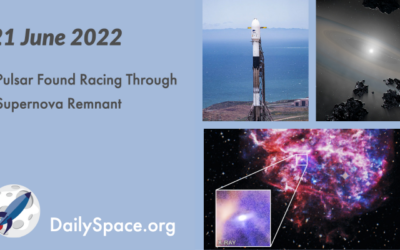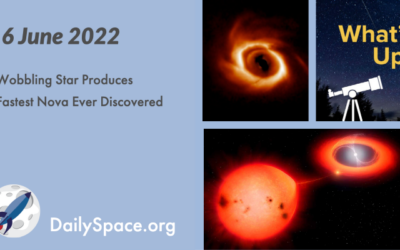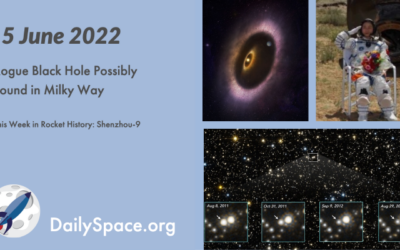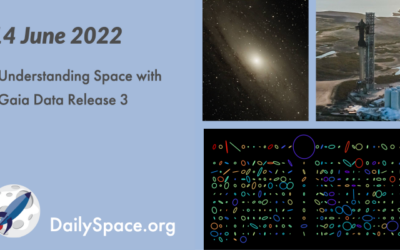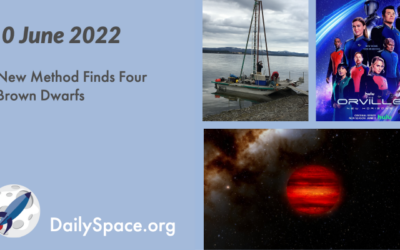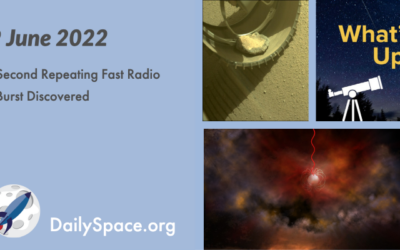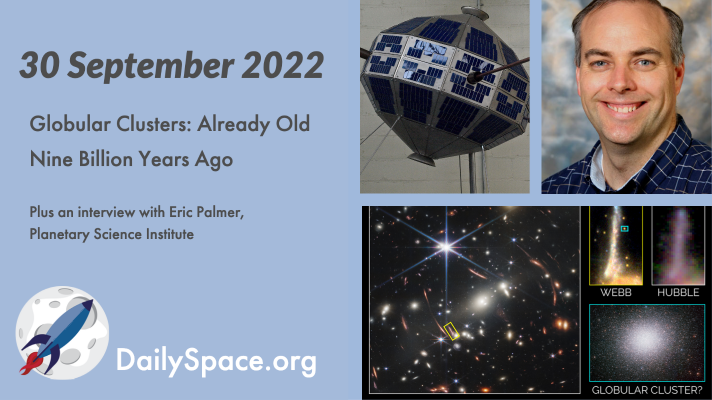
Globular Clusters: Already Old Nine Billion Years Ago
The quest to understand the formation mechanisms of globular clusters was limited by the Hubble Space Telescope’s ability to peer back in time. Now, JWST’s larger mirror has allowed astronomers to find gravitationally lensed galaxies that have globular clusters almost nine billion years old. Plus, two new super-mercury exoplanets, This Week in Space History, and an interview with Eric Palmer about the DART mission.
Catch us on NowMedia TV
Saturday 11pm Central / midnight Eastern
Sunday 10pm Central / 11pm Eastern
Watch live on these stations: Houston 21.10, Atlanta 22.10
or tune-in on Apple TV, Roku, YouTube Live, or Amazon Prime
Pulsar Found Racing Through Supernova Remnant
Researchers using the Chandra X-ray Observatory have found that a known pulsar is moving through a supernova remnant at over one million miles per hour. Plus, the life and death of stars, new pictures of the Large Magellanic Cloud, and all of the SpaceX rocket launches.
Wobbling Star Produces Fastest Nova Ever Discovered
Observations of V1674 Hercules reveal a nova produced by the white dwarf star that dimmed in only one day. Additionally, the strange star wobbles every 501 seconds, producing flashes in visible and X-ray light. Plus, more results from the 240th meeting of the American Astronomical Society, a farewell to SOFIA, and What’s Up is the June solstice.
Rogue Black Hole Possibly Found in Milky Way
After six years of Hubble Space Telescope observations and the hypothesis that millions of black holes exist in the Milky Way, scientists have finally found direct evidence for the existence of one such black hole. Plus, planetary formation, a wandering star, and this week in rocket history, we look back at China’s first crewed space station docking.
Understanding Space with Gaia Data Release 3
The Gaia mission released its third ‘treasure trove’ of observations and calculations of more than two billion stars in the Milky Way, including ‘starquakes’, stellar DNA, binary star systems, and more. Plus, day one of the American Astronomical Society press conferences and updates on Starship and NASA’s TROPICS-1 mission.
New Method Finds Four Brown Dwarfs
Using data from the fabulous Gaia mission, researchers have detected four new brown dwarfs as well as several other unusual companions to 25 stars in the Milky Way. Plus, Yellowstone, Earth’s magnetic field, hot Jupiters, and a review of the first episode of The Orville: New Horizons.
Second Repeating Fast Radio Burst Discovered
A second repeating fast radio burst was detected in 2019 by China’s FAST observatory and confirmed in 2020 by the Very Large Array. This latest discovery raises the possibility that there are two different types of FRBs. Plus, a SpaceX commercial launch, mission updates, neutron stars, and this week’s What’s Up.


 We record most shows live, on Twitch. Follow us today to get alerts when we go live.
We record most shows live, on Twitch. Follow us today to get alerts when we go live.

